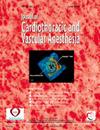Impact of Inflammation After Cardiac Surgery on 30-Day Mortality and Machine Learning Risk Prediction
IF 2.3
4区 医学
Q2 ANESTHESIOLOGY
Journal of cardiothoracic and vascular anesthesia
Pub Date : 2025-03-01
DOI:10.1053/j.jvca.2024.12.013
引用次数: 0
Abstract
Objectives
To investigate the impact of systemic inflammatory response syndrome (SIRS) on 30-day mortality following cardiac surgery and develop a machine learning model to predict SIRS.
Design
Retrospective cohort study.
Setting
Single tertiary care hospital.
Participants
Patients who underwent elective or urgent cardiac surgery with cardiopulmonary bypass (CPB) from 2016 to 2020 (N = 1,908).
Interventions
Mixed cardiac surgery operations were performed on CPB. Data analysis was made of preoperative, intraoperative, and postoperative variables without direct interventions.
Measurements and Main Results
SIRS, defined using American College of Chest Physicians/Society of Critical Care Medicine parameters, was assessed on the first postoperative day. The primary outcome was 30-day mortality. SIRS incidence was 28.7%, with SIRS-positive patients showing higher 30-day mortality (12.2% v 1.5%, p < 0.001). A multivariate logistic model identified predictors of SIRS. Propensity score matching balanced 483 patient pairs. SIRS was associated with increased mortality (OR 2.77; 95% CI 1.40-5.47, p = 0.003). Machine learning models to predict SIRS were developed. The baseline risk model achieved an area under the curve of 0.77 ± 0.04 in cross-validation and 0.73 (95% CI 0.70-0.85) on the test set, while the procedure-adjusted risk model showed improved performance with an area under the curve of 0.81 ± 0.02 in cross-validation and 0.82 (95% CI 0.76-0.85) on the test set.
Conclusions
SIRS is significantly associated with increased 30-day mortality following cardiac surgery. Machine learning models effectively predict SIRS, paving the way for future investigations on potential targeted interventions that may mitigate adverse outcomes.

心脏手术后炎症对30天死亡率和机器学习风险预测的影响。
目的:研究全身炎症反应综合征(SIRS)对心脏手术后30天死亡率的影响,并建立机器学习模型来预测SIRS。设计:回顾性队列研究。环境:单一三级保健医院。参与者:2016年至2020年接受选择性或紧急心脏手术合并体外循环(CPB)的患者(N = 1908)。干预措施:在CPB上进行混合心脏手术。在没有直接干预的情况下,对术前、术中、术后变量进行数据分析。测量方法和主要结果:SIRS是根据美国胸科医师学会/危重医学学会参数定义的,在术后第一天进行评估。主要终点为30天死亡率。SIRS发病率为28.7%,SIRS阳性患者30天死亡率较高(12.2% vs 1.5%, p < 0.001)。一个多变量逻辑模型确定了SIRS的预测因子。倾向评分匹配平衡了483对患者。SIRS与死亡率增加相关(OR 2.77;95% CI 1.40-5.47, p = 0.003)。开发了预测SIRS的机器学习模型。基线风险模型的交叉验证曲线下面积为0.77±0.04,测试集的曲线下面积为0.73 (95% CI 0.70-0.85),而程序调整风险模型的交叉验证曲线下面积为0.81±0.02,测试集的曲线下面积为0.82 (95% CI 0.76-0.85)。结论:SIRS与心脏手术后30天死亡率增加显著相关。机器学习模型可以有效地预测SIRS,为未来研究可能减轻不良后果的潜在针对性干预措施铺平了道路。
本文章由计算机程序翻译,如有差异,请以英文原文为准。
求助全文
约1分钟内获得全文
求助全文
来源期刊
CiteScore
4.80
自引率
17.90%
发文量
606
审稿时长
37 days
期刊介绍:
The Journal of Cardiothoracic and Vascular Anesthesia is primarily aimed at anesthesiologists who deal with patients undergoing cardiac, thoracic or vascular surgical procedures. JCVA features a multidisciplinary approach, with contributions from cardiac, vascular and thoracic surgeons, cardiologists, and other related specialists. Emphasis is placed on rapid publication of clinically relevant material.

 求助内容:
求助内容: 应助结果提醒方式:
应助结果提醒方式:


